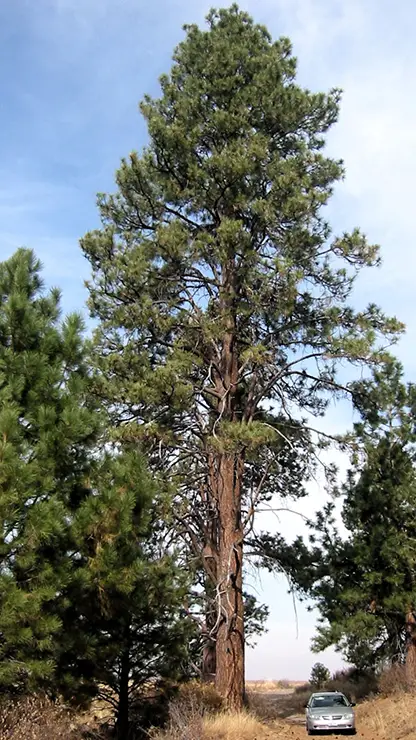

Ponderosa Pine
Pinus ponderosa Douglas ex C.Lawson
Ponderosa Pine
Pinus ponderosa Douglas ed C.Lawson
“…has characteristically aromatic bark. It can smell sweet, resembling butterscotch or vanilla.”– Fun Facts
 Ponderosa pine tree (Siegmund, 2005)
Ponderosa pine tree (Siegmund, 2005)


Summary
Taxonomy
(How things are grouped and categorized based on shared traits.)- Kingdom: Plantae
- -Phylum: Streptophyta
- –Class: Equisetopsida
- —Subclass: Pinidae
- —-Order: Pinales
- —–Family: Pinaceae
- ——Genus: Pinus
- ——-Species: ponderosa
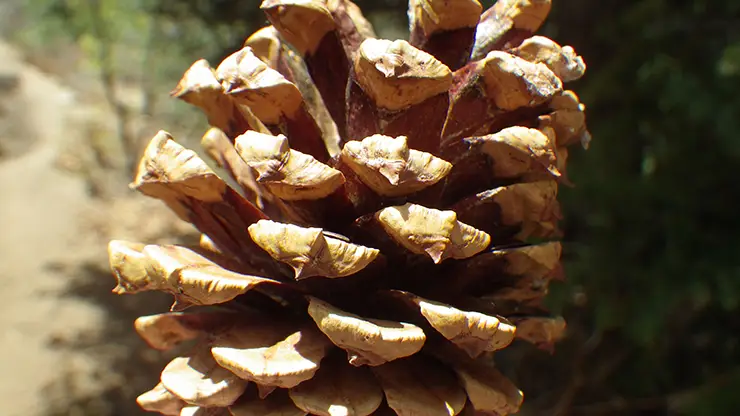
Taxonomic History:
Pinus ponderosa was first published in “Agriculturalist’s Manual” in 1836. David Douglas first collected this species from near Spokane, Washington and brought seeds to the United Kingdom in 1828. The authorship of the species is in dispute, with some suggesting that the plant was described by Lawson in 1836 for Douglas. Some suggest the correct name is Pinus ponderosa Douglas ex C. Lawson whereas others state it as Pinus ponderosa P. Lawson & C. Lawson.
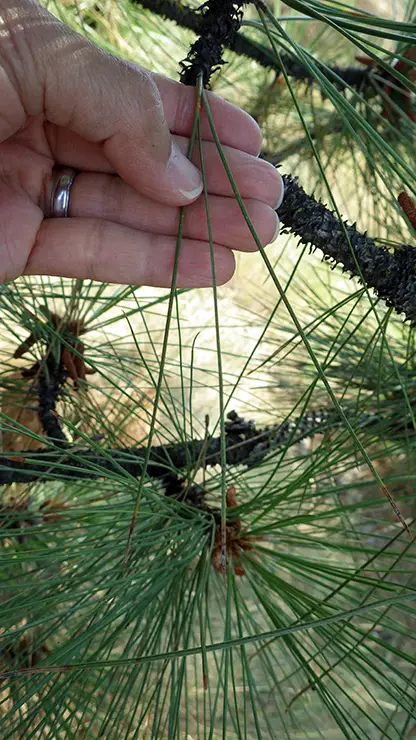
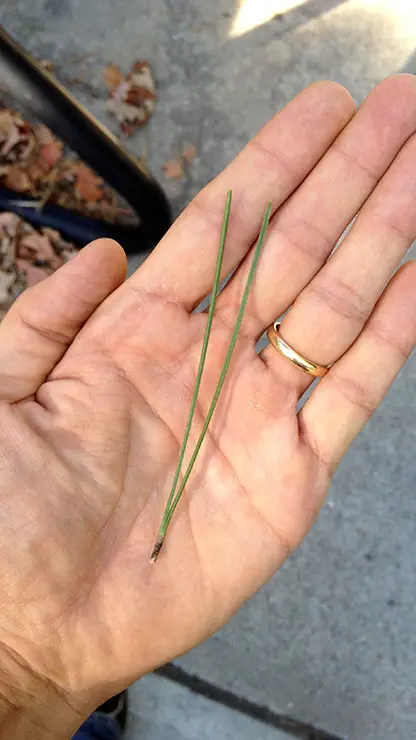

Identification Tips
Ponderosa pine has characteristic bark that is flaky and colorful, forming small plates around mature trees (Munts, 2024). Ponderosa pine can be confused with Austrian Pine (Pinus nigra) whose needles are only up to 6 inches long (MDC, 2024) whereas Ponderosa pine needles are usually larger, ranging from 6-12 inches (Kral, 2020); Austrian Pine always holds 2 needles per fascicle (MDC, 2024), while Ponderosa typically holds 3 (Munts, 2024) but can hold up to 5 (Kral, 2020).

Fun Fact!
Ponderosa pine often has characteristically aromatic bark. It can smell sweet, resembling butterscotch or vanilla (Munts, 2024).

Fun Fact!
The ponderosa pine has many common names, including the western yellow pine, bull pine, blackjack pine, western longleaf pine, western red pine, western pitch pine, Sierra brownbark pine, and ponderosa white pine, likely due to several described varieties or subspecies that are now synonyms.
Native Range:
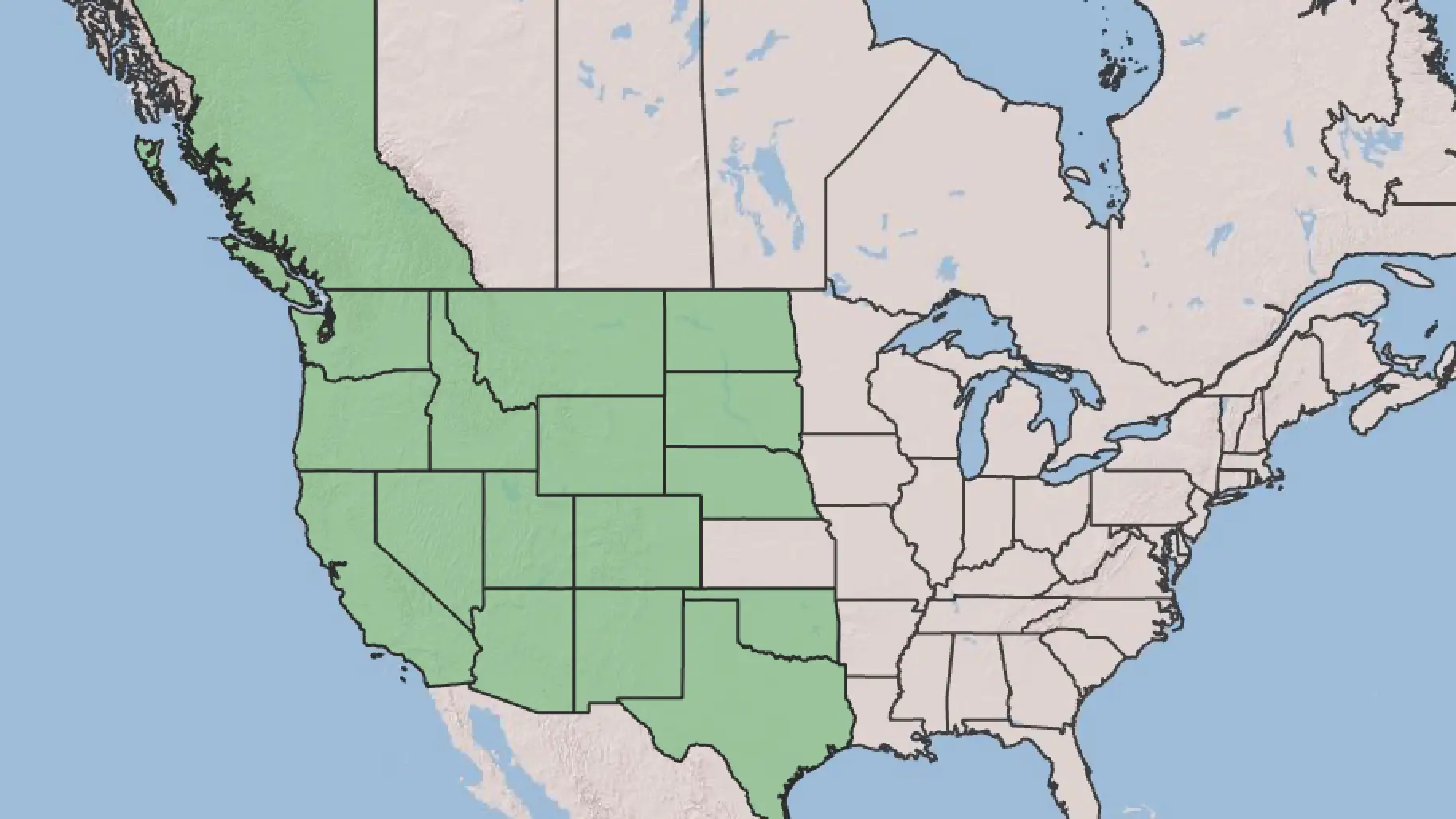

Native

Introduced
Plant Ecology/Habitat
Ponderosa pine typically lives in low-medium water habitats and is adapted to shallow, difficult soils and even bare rock. It typically lives in mountains from 6,000 ft to 8,500 ft. It supports a large variety of understory species. The seeds are eaten by numerous bird species and beavers can feed on the bark (USDA, 2014).

Economic or Ethnobotanical Uses
- Ponderosa pine is occasionally used as a Christmas tree and often harvested as lumber and firewood. Several varieties are found in cultivation and it’s commonly available from larger-scale nurseries. It is planted for its appearance and as a windbreak (USDA, 2014).
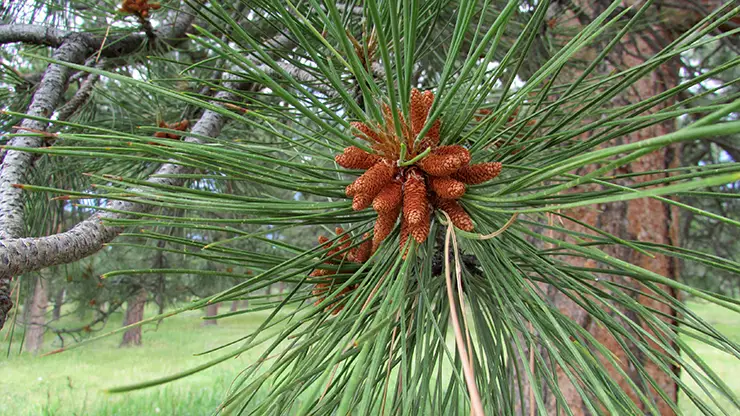

Conservation Status
Ponderosa pine is considered secure overall (NatureServe, 2016).
Additional Resources

References

- Chang, G. (2014). Ponderosa pine needles. [Photograph]. Flickr.
https://www.flickr.com/photos/gcchang/14684744843 - Kral, R. (2020). Pinus ponderosa. In Flora of North America, vol. 2 http://dev.floranorthamerica.org/Pinus_ponderosa . Accessed October 2024.
- Lambique. (2012). Pinus nigra (Austrian Pine) Needle Leaves.jpg Wikimedia Commons. Retrieved October 2, 2024, from https://commons.wikimedia.org/wiki/File:Pinus_nigra_%28Austrian_Pine%29_Needle_Leaves.jpg
- Lavin, M. (2013). Pinus ponderosa scopulorum – Rocky Mountain ponderosa
pine. [Photograph]. Flickr.
https://www.flickr.com/photos/plant_diversity/9774002012/in/photostream/ - Light, C. (2016). Pinus ponderosa (pollen cones) 2016-07-12 909.jpg [Photograph]. Wikimedia Commons. https://upload.wikimedia.org/wikipedia/commons/d/d4/Ponderosa_Pine_%28pollen_cones%29_2016-07-12_909.jpg
- Missouri Department of Conservation. (2024). Austrian Pine. [website]. https://mdc.mo.gov/discover-nature/field-guide/austrian-pine . Accessed 1 Oct 2024.
- Munts, M. (2024). Know your trees – ponderosa pine: U.S. Fish & Wildlife Service. [website]. FWS.gov. https://www.fws.gov/story/2024-05/know-your-trees-ponderosa-pine
- NatureServe. (2024). NatureServe Network Biodiversity Conservation Status Data accessed through NatureServe Explorer [web application]. NatureServe, Arlington, Virginia. https://explorer.natureserve.org . Accessed 1 October 2024.
- POWO (2024). Plants of the World Online. Facilitated by the Royal Botanic Gardens, Kew. Published on the Internet; http://www.plantsoftheworldonline.org/ . Retrieved 30 September 2024.
- Siegmund, W. (2005). Pinus ponderosa 8144t. [Photograph]. Wikimedia Commons. https://upload.wikimedia.org/wikipedia/commons/d/d8/Pinus_ponderosa_8144t.jpg
- USDA-NRCS-NGCE & NPDT (2014). Distribution of Pinus ponderosa. Retrieved 3 Feb 2024, from USDA Plants database, https://plants.usda.gov/plant-profile/PIPO
- Welsh, S.L., Atwood, N.D., Goodrich, S., and Higgins, L.C. (2003). A Utah Flora. Brigham Young University Press. Provo, UT.
